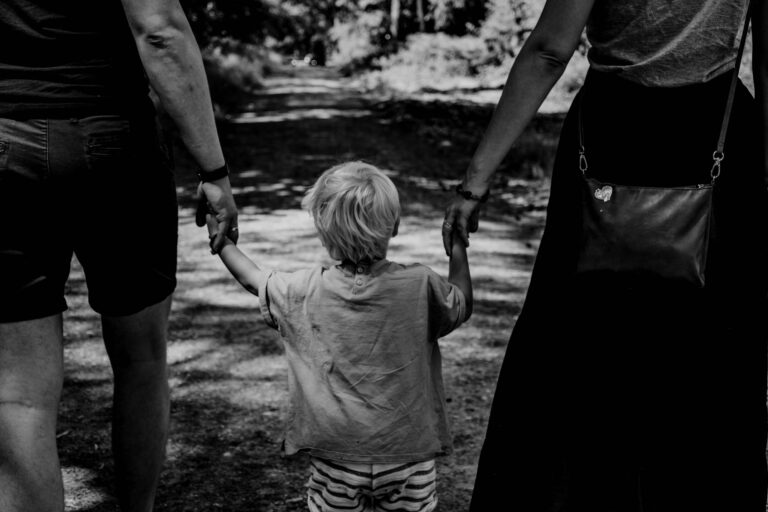Preparing to welcome a baby is rarely a straightforward journey, isn’t it? Amidst a whirlwind of emotions and questions—Will labor be manageable? Which is the safest way to give birth? How can I get ready for breastfeeding or care for my newborn?—parents often find themselves searching for reliable, evidence-based support. Enter the world of birth preparation classes: a space where medical science, practical advice, and peer encouragement converge to bring clarity and confidence to the many unknowns of childbirth and early parenting. Expect hands-on tips, science-backed explanations, and paths towards a more empowered parenting experience—tailored to your pace, background, and comfort.
Understanding birth preparation classes: Purpose, Principles and Expectations
Birth preparation classes, sometimes called antenatal or childbirth classes, are structured learning sessions built specifically for soon-to-be parents. Picture this: a blend of friendly conversation, open Q&A, and hands-on demonstration, all driven by professionals trained in maternal care—midwives, certified childbirth educators, or medical practitioners.
Why are these classes recommended, you wonder? Scientific studies have shown that education on labour physiology—how hormones like oxytocin (which triggers powerful uterine contractions) and progesterone (which helps keep the uterus calm)—can not only reduce anxiety but also promote better health outcomes for mothers and babies. Imagine learning why certain positions might reduce pain or how your body’s natural rhythms interact with hospital interventions. Expect detailed breakdowns of labour stages, from dilation to delivery, as well as insider tips on recognizing early signals—think “Is this real labour or just a false alarm?”
Don’t underestimate the value of emotional readiness, especially for first-time parents. Beyond textbook facts, these classes frequently focus on the mindset shift required for childbirth—practising relaxation methods, breathing exercises, or coping strategies. Partners, parents-in-law, or close friends are welcomed in most formats, turning observers into active supporters. This shared learning can truly transform a loved one’s involvement from passive onlooker to key pillar of support during intense birthing moments.
And for those facing high-risk situations, twins, or seeking Cesarean-specific advice? There are tailored sessions to address these special journeys in greater depth.
Exploring Your Options: Which Birth Preparation Class Fits You?
Face-to-face in a busy hospital room, virtually from the comfort of your sofa, or one-on-one in a private clinic—the variety is substantial. The lineup might include:
- Lamaze classes: Focus on rhythmic breathing, movement, and making informed decisions about interventions.
- Bradley Method: Stands out for emphasising natural birth, nutrition, and enthusiastic partner involvement. Expect to rehearse positions, relaxation and gentle coaching.
- HypnoBirthing: Introduces parents to guided imagery and deep relaxation, harnessing the mind’s power to ease pain and lower stress.
- Birthing From Within: Ventures into creativity—think self-reflection, art, and coping skill integration.
- Alexander Technique: Centred around posture and smoother movement during labour, reducing discomfort.
- Cesarean Birth Preparation: Answers the specific concerns around planned surgical delivery, demystifying both the operation and emotional recovery.
Classes might happen in:
- Hospital sessions: Directly linked to the birthing facility and its practices, sometimes including a tour of labour and postnatal wards.
- Private or boutique settings: Tailored attention and custom content, sometimes with added cultural or linguistic sensitivity.
- Community or online groups: Ideal for those seeking cost-saving or flexible, self-paced modes.
Should you choose in-person, expect tactile demonstrations—swaddling a soft doll, for example, or practising breathing techniques with the group. Online and hybrid models bring expert videos, interactive Q&A, and learning modules that cater to any timetable. The perfect fit? That depends on your philosophy (natural vs. assisted), schedule, and whether you find energy in group dynamics or value undivided focus.
What’s Inside? Key Topics Offered by Birth Preparation Classes
Scratching beneath the surface, what do birth preparation classes actually impart? The curriculum, driven by medical research and best practice, is both wide and deep:
- Week-by-week pregnancy changes: Realistic discussions around maternal adaptation and fetal progress.
- Prenatal midwife consultations: An essential touchpoint to address personal concerns, family wishes or clarify doubts.
- Stages of labour and delivery: Unpacking what happens from that first contraction until the placenta is delivered, using diagrams, videos, and practical metaphors.
- Identifying labour signs: How to spot ‘show’, contractions, or when to call the hospital—explained plainly.
- Pain relief, both medical and non-pharmacological: Learn the difference between an epidural and nitrous oxide, or master visualisation, hydrotherapy, and acupressure.
- Breathing and relaxation drills: Borrowing from methods like Lamaze and HypnoBirthing, each session will usually involve practice—sometimes guided, sometimes peer-driven.
- Labour positions and movement: Why does squatting work? Should you use a birthing ball? Evidence comes alive through active practise.
- Medical interventions explained: Assisted birth (forceps, vacuum), induction protocols, and the reality of unplanned C-sections, explained without scare tactics.
- Role of support person: From hands-on counterpressure to navigating emotional distress, practical role-plays and communication exercises equip families for various scenarios.
- Drafting and adjusting a birth plan: Discussing wishes early, understanding informed consent, and knowing which parameters are flexible if circumstances shift.
- Feeding and newborn care: Milk production, latching tips, safe sleep, nappy-changing routines, and interpreting newborn cues—nothing is left to guesswork.
- Postpartum recovery and maternal wellbeing: Learning to normalise physical changes (bleeding, body aches), tracking emotional state, and when to seek professional guidance for mental health.
Encouraging frequent questions and storytelling, these classes create a safe platform where small worries can be voiced and complex topics are broken down in digestible parts.
Customising Your Birth Preparation Experience
No two families are identical—why should their learning journeys be? Birth preparation classes allow for substantial customisation: large groups energise some, while intimate two-person sessions feel much safer to others. Classes are generally timed between the 28th and 34th week of pregnancy, keeping knowledge fresh without missing out on late changes.
Language, culture, prior experience (are you a repeat parent, or do you have specific medical needs?), and even price point—these all influence your choice. It’s worth checking if your health insurance or community centre covers some or all of the cost. Don’t hesitate to ask about class credentials; a trusted midwife or doula brings experience that pre-recorded internet resources cannot match.
For non-first-timers, classes might pivot: less about biology basics, more about techniques for partner involvement, sibling introduction, or relaxation in differing birth scenarios (for example, group aqua-natal sessions).
Lots of parents prefer formats reflecting their linguistic background, but feel just as comfortable when topics are backed with medical credibility and open-minded instruction, so ensure your choice ticks these boxes.
Inside the Classroom: Learning Methods and Atmosphere
Step into a typical session and you’ll find a collage of learning techniques:
- Live demonstrations: Anatomical models clarify explanations, while real-life birth videos demystify what to expect. Medical equipment—forceps or birth balls—aren’t just theoretical but tangible.
- Practical activities: Swaddling, ideal positions, or hands-on comfort massages—parents get to try before they need to do.
- Role-plays and creative workshops: Acting out communication with doctors or partners, expressing hopes and fears artistically.
- Peer-to-peer exchanges: Candid conversations often start with a simple “Did this worry you too?” and quickly forge bonds.
- Flexible schedules: Multi-week programs for gradual learning, workshops if tight on time, or even hybrid models mixing digital and in-person touchpoints.
- Digital technology: From virtual hospital tours to online message boards—tech has widened access and nurtured community among parents who may never otherwise meet.
What you carry home isn’t just a folder of notes, but a shift in mindset: less fear, more confidence. The science and practice intermingle, tailored by the needs and voices of each group.
The Ripple Effects – How Birth Preparation Classes Support Parents and Families
Birth preparation goes well beyond simple knowledge transfer. Physiologically, understanding what’s happening inside your body dampens fear responses; emotionally, feeling prepared supports better mental health and family bonding.
Benefits that ripple out from participation include:
- Lower anxiety levels: By clearly outlining labour stages, common scenarios, and ‘what-ifs’.
- Empowerment to make informed choices: Being aware of what’s medically necessary and what’s optional.
- Partner involvement: No more helpless sideline-watching—practical strategies turn them into advocates and companions.
- Newborn care mastery: Feeding, swaddling, interpreting newborn signals—handled with more surety.
- Establishing support frameworks: Connections to other parents, future playgroup mates, and local health resources—often the beginnings of a dependable social circle post-birth.
Science echoes real parent feedback: education isn’t just preventative; it actually enhances experience and outcomes.
Modern Families, Modern Challenges: A Changing Support Landscape
Times have changed—smaller families, later pregnancies, less sharing of stories between generations. As society shifts, reliance on professional help and structured information has only grown. Birth preparation classes bridge the gap, not only for first births but also adapting content for experienced families looking for new strategies or different approaches (for example, preparing older siblings or rethinking roles in the birth room).
Multiparity brings different worries—will this baby’s labour be quicker? Do I need new skills for coping if my circumstances have changed? Modern classes evolve with these questions.
From Class to Life: Putting Lessons into Practice
Having attended, how do you actually use what you have gained from birth preparation classes? It’s about:
- Drafting a birth plan that fits your values, but can flex with unexpected changes.
- Communicating with health professionals clearly, knowing how and what to ask.
- Picking coping strategies like focused breathing or position changes when contractions intensify, but also knowing when to seek help or accept new tactics.
- Holding tight to connections, whether with class peers or local networks, ensures support even in the unpredictable fourth trimester.
Learning doesn’t end at the delivery room door—it’s your springboard for parenthood’s ongoing adventures.
Beyond Birth: Continuing Support and Education
Labour and birth may be done in hours, but parenting is a marathon. The early postpartum weeks—often called the fourth trimester—can present a blur of sleepless nights, feeding uncertainties, and emotional swings. Parents benefit from the extended hand of birth preparation classes: hospitals and community groups regularly offer postnatal sessions, covering baby sleep, maternal recovery, breastfeeding troubleshooting, and early parenting tips.
Resources don’t stop at the hospital exit. Online parent groups, healthcare clinics, lactation consultants, and mental health professionals are just one call—or one click—away. Building and maintaining these connections ensures a softer landing after birth, nurturing both you and your child.
Key Takeaways
- Birth preparation classes stand as pillars of support, blending up-to-date medical knowledge with practical skill-building and emotional reassurance for families.
- An impressive range of topics—from hormonal changes in pregnancy to real-time labour management, partner roles, and newborn care—are addressed with clarity and scientific accuracy.
- Every parent finds their fit: hospital, private, community-based, or virtual modes cater to both diverse backgrounds and busy schedules.
- Input from healthcare professionals brings reliability, while community engagement fosters long-term family wellbeing.
- Parents are encouraged to take the next step with accessible resources, including the Heloa application, which offers personalised advice and free health questionnaires for children.
Questions Parents Ask
How can I locate birth preparation classes suitable for me, either nearby or online?
There’s a broad selection now: local hospitals, birthing centres, private clinics, and even neighbourhood health groups host both group and individual sessions. For greater flexibility or at-home learning, seek online live or on-demand sessions—sometimes free of charge. Search with phrases like “birth preparation classes near me” or “online birth preparation classes”; also, check recommendations from midwives and parent collectives.
Are there options for birth preparation classes that don’t cost anything?
Yes—numerous public hospitals and community health organisations deliver complimentary birth preparation classes. Similarly, digital platforms sometimes host no-cost live webinars or self-paced courses specifically for parents. If finances are a concern, it pays to consult your maternity team regarding free or subsidised options available in your city.
What kinds of topics generally feature in birth preparation classes?
While content varies, the foundation is broad: nature and stages of childbirth, pain relief choices and their effects, practical demonstrations of newborn care and feeding, and strategies for a smoother physical and emotional recovery. Breathing and mindfulness exercises frequently appear, alongside honest, scientific explanations for various delivery scenarios and how partners can actively help throughout labour and the early days at home.









